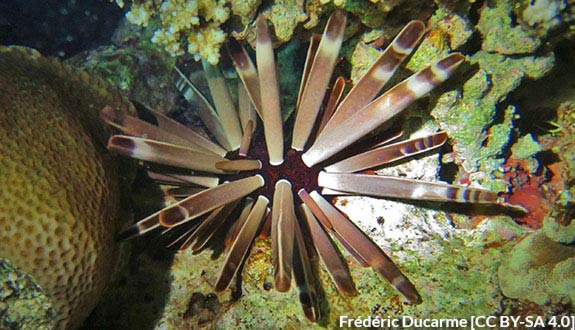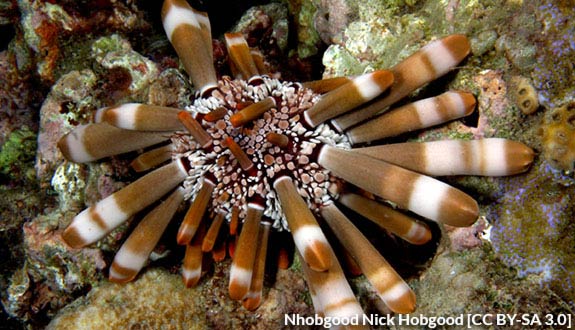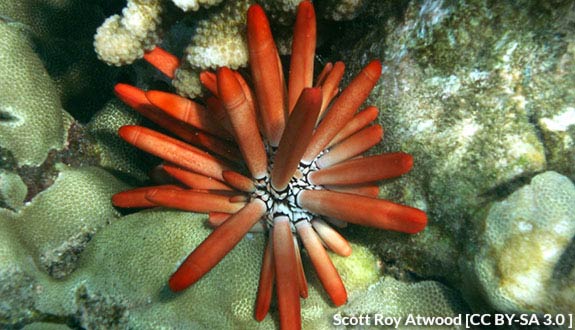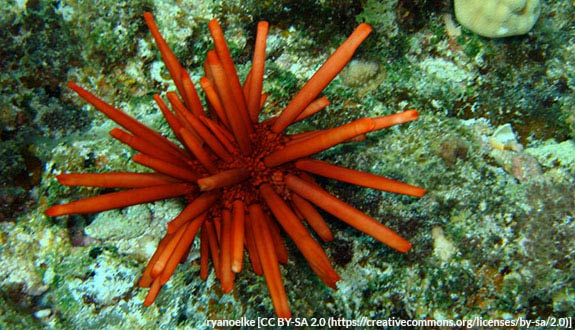

Alternative species (click on the thumbnail to see the card)
Names
Scientific name
Heterocentrotus mamillatus
Heterocentrotus mammillatus
Common name
Slate pencil urchin
Red pencil urchin
red slate pencil urchin
Origin

Origin: South Pacific, Indian Ocean and Red sea
Biotope: coral bottom, lagoons, seagrass... It hides in caves or crevices (up to 10 m or 32 feet deep).
Dimorphism

None
Group

Echinometridae
Volume

300 L / 66 imp gal / 79 US gal
Parameters

T°: 25°C or 77°F
pH: 7.5 to 8.5
Density: 1021 to 1024
Difficulty
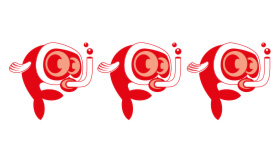
Hard
Size
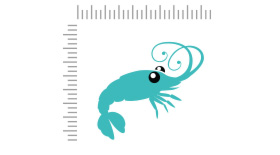
Without spine : 8 cm or 3.2"
With spine : 30 cm or 12"
Longevity
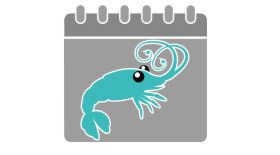
No data
Living zone
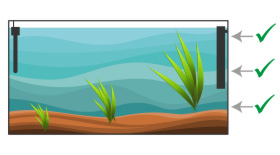
Everywhere
Individuals

1
Food
How to feed the Heterocentrotus mamillatus?
Food
How to feed the Heterocentrotus mamillatus?
The Slate pencil urchin is herbivorous and algaevorous: it will feast on any vegetation contained in your aquarium, including algae (and even encrusting algae)!
Complete your diet with boiled vegetables and dry food, which you will distribute after the extinction of your lighting.
Behavior
What kind of behavior does the Palette Heterocentrotus mamillatus have?
Behavior
What kind of behavior does the Heterocentrotus mamillatus have?
This invertebrate is sociable. However, it can somewhat upset your decor. It is rather nocturnal and spends its day hidden away from a cave. In reality, it will not show itself much during the day.
Cohabitation
Who can live with the Heterocentrotus mamillatus?
Cohabitation
Who can live with the Heterocentrotus mamillatus?
Be careful not to put fragile corals with this sea urchin! Indeed, it could damage them in its path, even if it is not intentional (it is not aggressive, it is only a little abrupt).
It is often found in the company of a bumbleback shrimp (Gnathophyllum americanum).
Breeding
How to breed the Heterocentrotus mamillatus?
Breeding
How to breed the Heterocentrotus mamillatus?
In the wild, breeding occurs in the summer when the temperature of the water increases. The sea urchins fertilize externally: they secrete directly in the water their breeding cells (gametes). Male and female do it simultaneously. The larvae resulting from this mating will undergo different stages of evolution until they become miniature sea urchins.
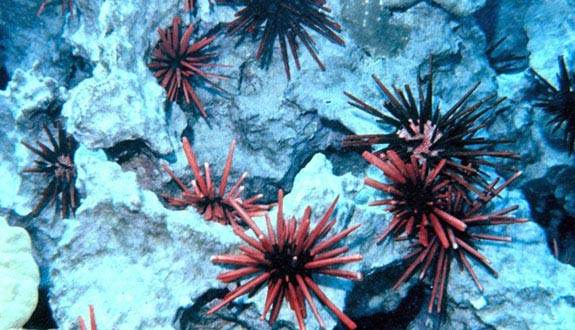
Breeding of this species is impossible in captivity. Even if you get to start the breeding process, breeding larvae is still unfortunately impossible.
Its aquarium
Which aquarium for the Heterocentrotus mamillatus?
Its aquarium
Which aquarium for the Heterocentrotus mamillatus?
It is important to offer this invertebrate hiding places to take refuge during the day. For this, form caves among your rocks. However, pay close attention to the stability of your arrangement. Indeed, this big sturdy sea urchin is known to be a «mover»!
Even if it is nocturnal, the Slate pencil urchin does not like a too intense lighting: it flees the light. You will therefore need to minimize your lighting for it to feel comfortable.
Good To know
Find all additional information!
Good To know
Find all additional information!
Its name comes from its thorns thick and robust. They used to be pencils for writing on slates. Today, we make jewels or souvenirs with these big rigid quills.
The Slate pencil urchin is known for its strength and resistance out of the ordinary.
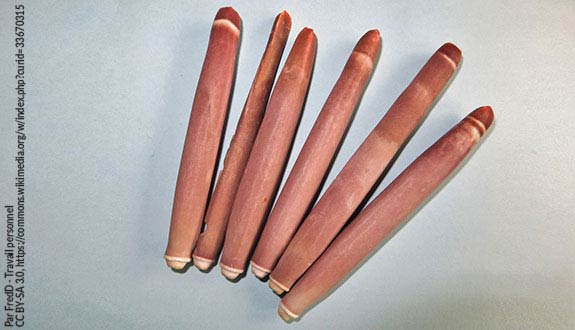
It can sometimes be confused with Heterocentrotus trigonarius of which it is very close. Their difference is especially seen in the form of their quills, sharper, longer, and darker in Heterocentrotus trigonarius than in Heterocentrotus mamillatus.
It can rebuild in a few months its damaged quills.
Its most common form is a flaming red or orange color. However, we can also meet brown, cream, fawn or pale pink Slate pencil urchin. Sometimes their tips or bases are ringed with a lighter color.
For the pleasure of the eyes, here are some pictures:
Yours photos!
Comments
Sort by:
Please login to post comments


